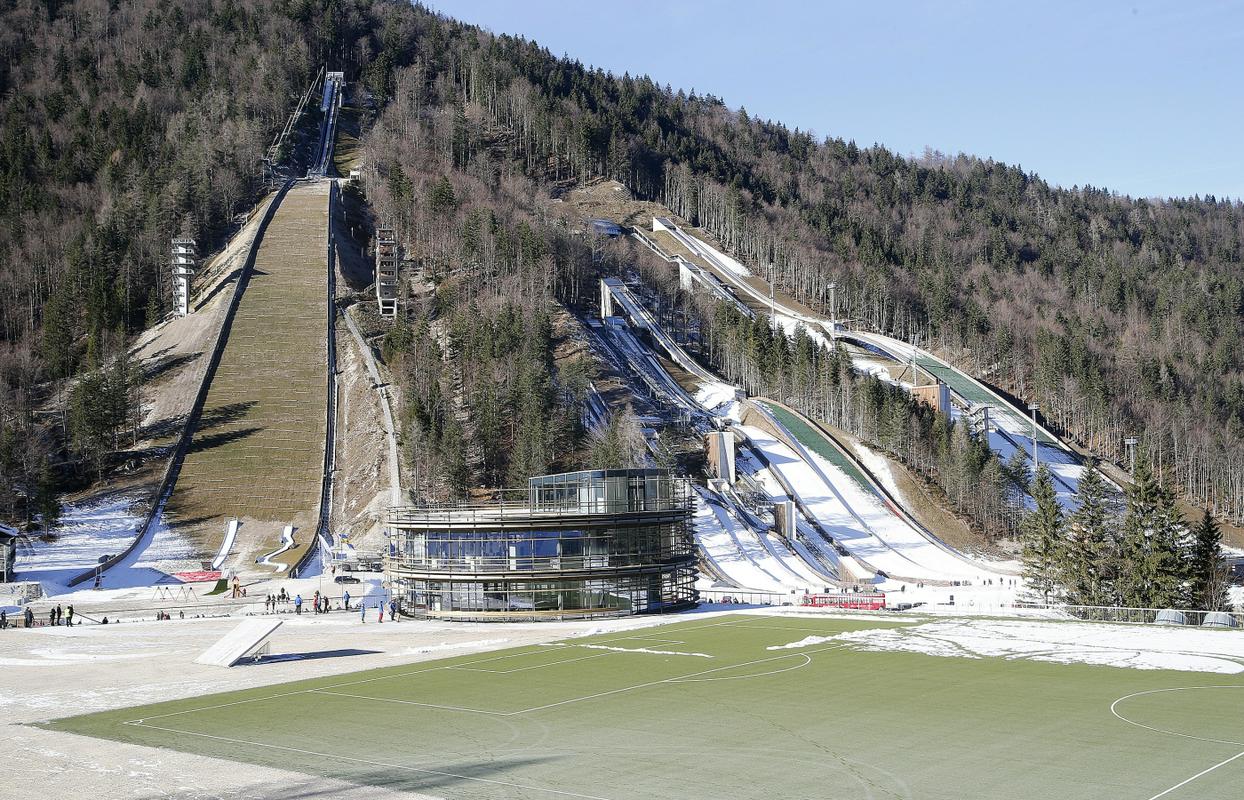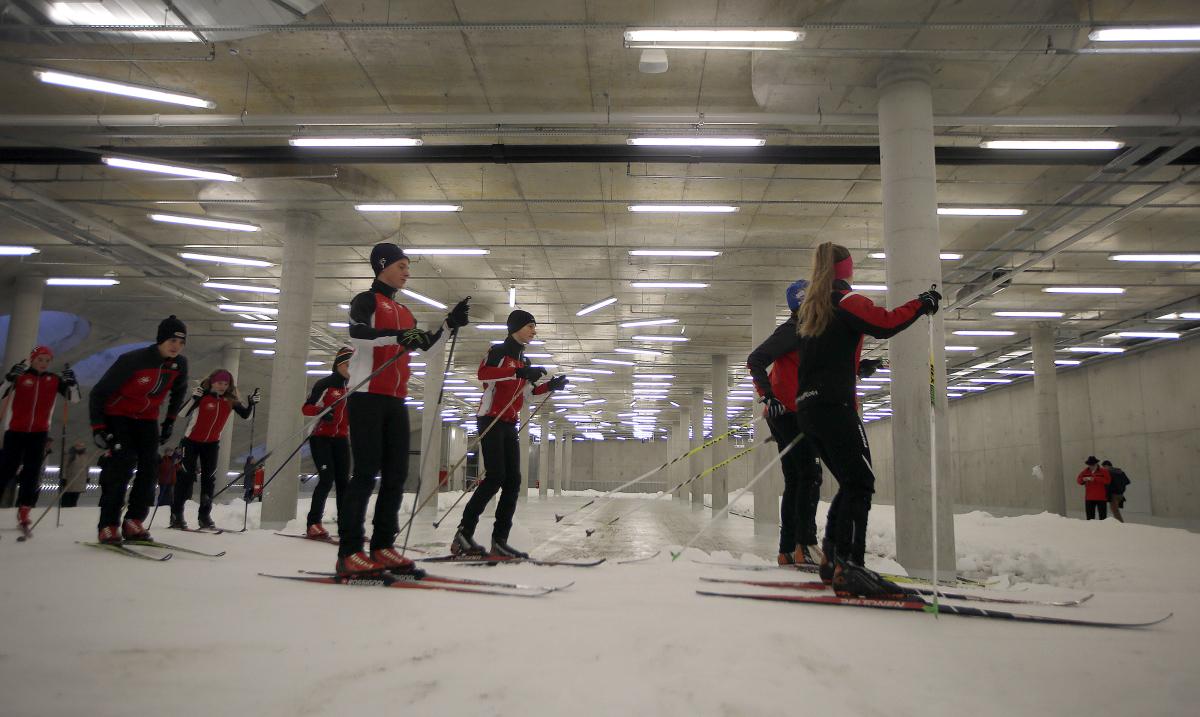



The Planica Nordic Centre is ready for new records – in particularly we hope in ski jumping, a sport which officially started in Slovenia with the very first record and championship held in Bohinj in 1921. The first record holder was Jože Pogačar, who jumped a distance of 9 metres. In doing so he initiated the sport of ski jumping at Planica which has gone on to establish itself as the cradle of ski flying.
New Planica Nordic Centre
As early as the 1930s, Joso Gorec conceived the idea of a modern year-round sports resort, one which would attract visitors from near and far and which would become home to the world’s largest ski jumping hill.
In December 2015, this idea was fully realised with the opening of the upgraded Planica Nordic Centre. In January 2016, it will host the first race of the Cross-Country World Cup, while in March it will be the venue of the traditional final event of the Ski Jumping World Cup.
The Nordic Centre covers 100,000 square metres of sports terrain, where seven ski jumping hills and the flying hill take centre stage. The newly constructed cross-country complex includes a stadium, sports area and various cross-country tracks. There is also an artificial snow-making system together with cableways, athletics and football stadium, wind tunnel, zipline, cycling and walking paths, cultural heritage park and information area with catering facilities.
The sports centre will thus be open and functioning all year round – in winter and in summer. Top sportspeople will have ideal conditions for training and the Planica ski jumping school will be revived once more for young enthusiasts. Recreational sports lovers will be able to test their endurance with a range of challenges and thereby spend their leisure time engaged in active pursuits. Adrenaline junkies will have the opportunity to test their nerves on a 566-metre long zipline with a 202-metre drop in altitude and 38.8 per cent gradient – making it the steepest zipline in the world where speeds of up to 90 km/h can be achieved. Safety regulations dictate that visitors must weigh between 40 and 120 kg and should measure between 140 and 200 cm in height.
Nevertheless, the focus at Planica will always be on the sporting competitions themselves. Sport integrates, inspires national consciousness, strengthens friendship and raises the recognisability of Slovenia in the world.
Importance of Planica for Slovenia
The opening competition was organised at the Bloudek Giant Hill on 4 February 1934. The first international competition with 14 ski jumpers from Norway, Austria and the then Yugoslavia was held between 23 and 26 March 1934. A new world record was set. Norwegian Birger Ruud jumped 92 metres and the reputation of Planica spread throughout the world.
On 15 March 1936, Austrian Josef "Sepp" Bradl became the first man in the world to jump over one hundred metres at Planica recording a distance on landing of some 101.5 metres. The ski jumping hill at Planica was the largest in the world. Thus began the rivalry and competition with the Norwegians for global recognition. The Norwegian Ski Federation tried to hinder the development of ski jumping through the FIS. As late as 1954, no competitions were held in Planica; only trials were held under different names and there was no scoring. But that did not prevent the development of ski jumping hills and the setting of new records. In 1948, the Swiss Fritz Tschannen set a record of 120 metres, a record which lasted for 21 years. So far, 42 world records have been set at Planica and it was here that the magical threshold of 200 metres was passed for the first time.
The dream of the Planica pioneers came true after 1971 when the FIS at its congress in Opatija, Croatia, decided to hold the 1972 FIS Ski Flying World Championship in Planica; ski jumping thereby became a discipline of equal status to other winter sports. Planica has established its place on the calendar of the Ski Jumping World Cup as the season’s grand finale on the Bloudek Giant Hill.
Planica reflects the knowledge and excellence of Slovenian designers, engineers and other experts. It is a symbol of boldness, natural beauty and of world-renowned heritage. Planica is one of the national symbols of Slovenia.
The designer and builder of the first giant hill, Ivan Rožman, came up with another innovation: because of soft snow, he chemically treated the ski jumping hill and invented snow cement. In his memoires, the Norwegian ski jumping champion, Sigmund Ruud, described Rožman’s invention, which enabled the first international competition in Planica in 1934 to be held in conditions of severe thaw in front of some four thousand spectators. “We were afraid that the next day’s competition would be called off. But in the afternoon, the engineer who constructed the ski jump arrived. He brought with him several large dispensers. That was the first time we saw artificial means for freezing snow. It was a mixture of sal ammoniac and salt. He had been experimenting over the past three months and discovered that snow could be solidified within minutes with this mixture and it remained solid for eight to ten hours. To say that we were sceptical would be something of an understatement. We observed him with curiosity as he started work on the landing strip. But we didn’t believe that it would work. I cannot deny that we were all gob-smacked when we tested the snow a few minutes later. Just moments before, we were sinking in it. And now, it was solid ice which carried our weight.”

























































